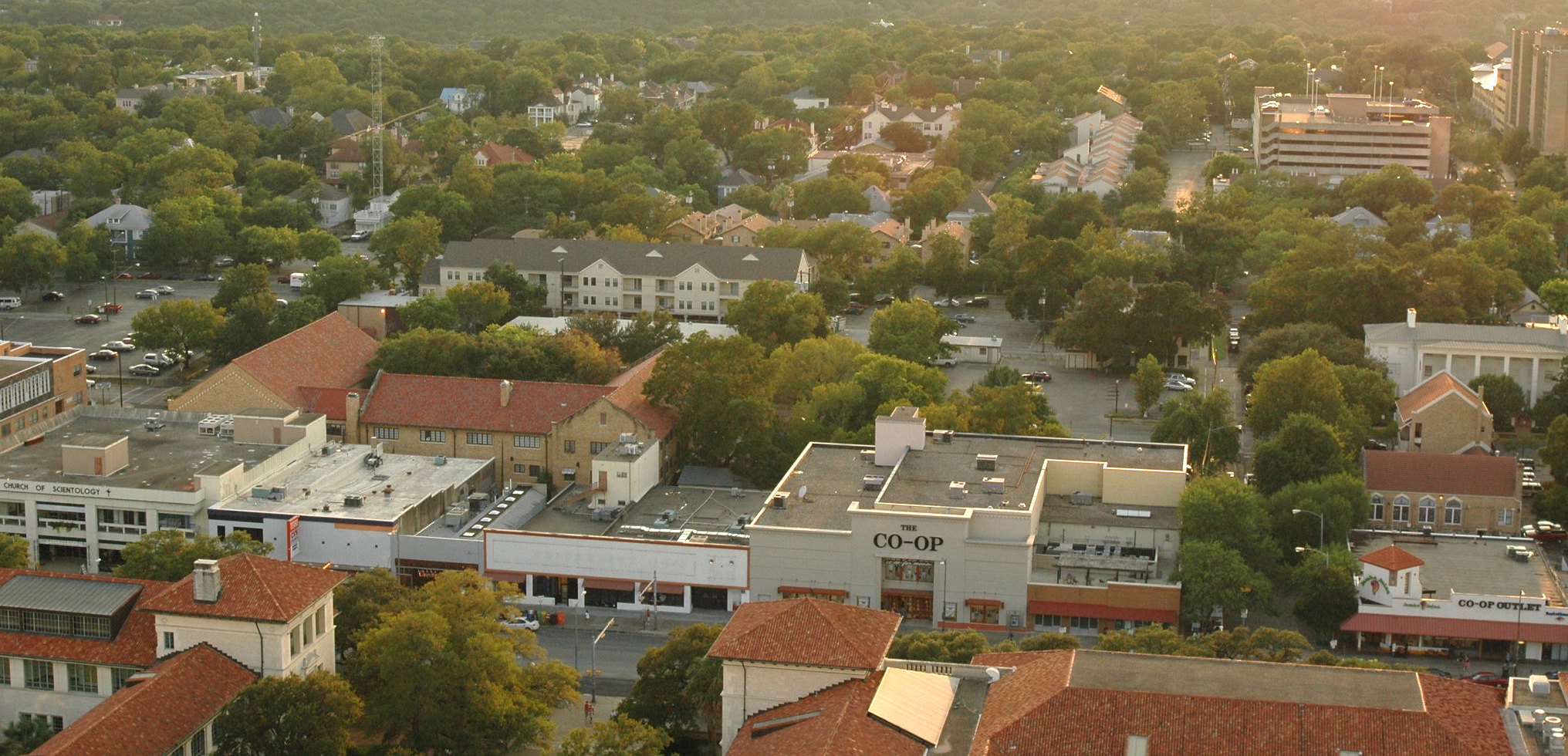A weathered, yellow building stands tucked between two high-rises on 24th Street. It’s not an eye-catching sight, especially amongst the continuous development taking place in the neighborhood. However, with rents ranging from $700-$2000 per room in West Campus, this building is one of the last affordable housing options left for University of Texas at Austin students.
It took 20 tours and three real estate agents over the course of a couple of months for Kayla Angel to find an apartment that fell within her price range. In West Campus, where rent averages in the thousands, Angel was able to find a place for $425 per month—but it came at a cost. The building has been through a succession of management companies, leaving Angel in the dark about who’s responsible for her home.
“I don’t know who has our deposit money,” she told the Texas Observer. “And last year, we had a rat in our apartment [and] there was a big pipe that burst. It smelled terrible for weeks, and we received no notification of when this was going to get fixed [or] what was going on.”

West Campus, a neighborhood steps from the University of Texas at Austin, primarily houses college students due to its proximity to campus. A neighborhood that was once littered with colorful homes has become filled with high-rises that grow in size each year. The neighborhood’s zip code, 78705, is now the third most densely populated in Texas. With West Campus expanding at such a rapid rate, luxury student apartments have been popping up throughout the majority student neighborhood. While the city offers some affordable housing options within West Campus, these continue to be extremely limited and become more sparse each year.
With students having to take out loans and work excessive hours to keep up with ever-increasing rent prices, Angel said she finds it upsetting that the university isn’t taking the initiative to make college as accessible as it should be.
“There was a big pipe that burst. It smelled terrible for weeks, and we received no notification of when this was going to get fixed.”
“The university holds so much power,” Angel said. “If they can make a law saying that nothing can be built between the tower and the Capitol, they can make some sort of policy where there’s a rent cap for students.”
To Angel, it’s incredibly troubling that students have to work long shifts coupled with their academic responsibilities, all while worrying about whether they’ll be able to afford rent.
“You should be able to have your college experience, it’s your first time away from home,” Angel said. “It would be nice if money wasn’t as big of a factor as it is. … They keep making it tough on everybody.”
This year, Democratic Representative Yvette Clark introduced an affordable housing bill that would create a federal low-income housing assistance program by lowering rent based on area median income while simultaneously aiming to increase the number of affordable housing options for purposes of a federal low-income housing assistance program. The bill was referred to the House Committee on Financial Services on May 12, 2022, and has languished there since.
Democratic state Representative Gina Hinojosa told the Observer that, as of now, the state doesn’t have any rent relief programs geared specifically towards student housing. In 2013 the city of Port Arthur passed legislation that allowed the Port Arthur Economic Development Corporation to fund affordable housing leading to a $6 million investment in the construction of affordable student housing on Lamar State College’s campus. Hinojosa said she wonders whether a similar model could be reused at more universities.
“In getting the rent to be lowered, building affordable housing is a start,” Hinojosa said. “Because of affordable housing, they have a cap on what they can bill the student, and usually that cap is much lower than the average rate of rent in that area … making it affordable for the students to be able to live there on campus.”
“You should be able to have your college experience, it’s your first time away from home. They keep making it tough on everybody.”
After living in an apartment complex during his freshman year, Joey Samfield transitioned into a co-op in West Campus three years ago and hasn’t left since. While he lives with 25 other students, he still has his own space within the seemingly packed housing accommodation.
Samfield pays $870 per month, which includes Wi-Fi, utilities, and food. While other UT-Austin students’ rent has increased by hundreds over the past couple of years, his rent has only increased by $90 throughout his time at the co-op. While he originally switched to a co-op because of the social aspect, Joey doesn’t think he’d be able to afford an apartment within West Campus now if he didn’t have this option, especially thanks to the rising cost of living.
“Things have been tighter the last year of my degree,” Samfield said. “The amount I’d be working outside of my degree would completely burn me out. It would be physically possible.”
He feels discouraged after witnessing historic landmarks and apartments throughout West Campus get demolished with expensive high-rises sprouting up in their place. It’s disheartening to see how other students are struggling while the university essentially lets it happen.
“As an institution, UT has so much public power, you’d think they would do something to mitigate the rising cost of rent, in this iconic student neighborhood where people live and work to finish their degree,” Sanfield said. “They’re letting people get priced out. … I don’t think UT is doing nearly enough. In my eyes, it’s not just negligent, it’s evil.”







